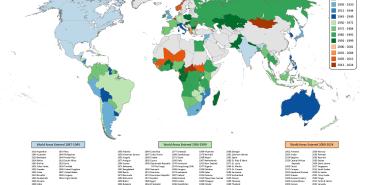Resurrection in the Gospel of Mark

One of the more interesting biblical puzzles involves the account of the resurrection in the Gospel of Mark. Among the ancient versions of Mark that still survive, there are several different endings, most of which read like a more brief version of the other gospels. Several women find an empty tomb and are told that Jesus is alive. These women report this to the other disciples. Then, the resurrected Jesus appears to the disciples to encourage and teach them before promising His return and ascending to the Father.
However, the oldest remaining complete versions of Mark end quite abruptly in 16:8. This verse records that Mary Magdalene, Mary the mother of James, and Salome find the empty tomb and are told that Jesus has risen from the dead. Then the three flee in fear and amazement and tell no one. End of story.
Scholars haven’t reached consensus as to which was the original ending and probably never will. But let’s imagine for a moment a plausible scenario: the original version ended right there with verse 8, void of any encounters with the resurrected Jesus and the disciples leaving fearful and confused. This doesn’t seem to be a very appropriate ending to a book we call a ‘gospel.’ What are we to make of this?
Well, first, let’s be clear. The tomb is empty! Mark is perfectly clear on this point. Furthermore, Jesus is risen from the dead. The angelic figure in white declares this to the three disciples, and early Christians were universal in affirming the resurrection. The truth of the resurrection is not in question here. It’s an assumed fact.
So, then, why end the gospel on such a low note? Why conclude with the first witnesses to the empty tomb fleeing in fear and silence?
Stepping into the Mystery
Earlier stories in Mark’s gospel show us that this fear and confusion is not unusual. In fact, in all four gospels, we find disciples struggling to understand Jesus. Occasionally, Jesus must interpret His parables for them in order to alleviate their confusion. This is especially emphasized by Mark. The disciples are continually confused by Jesus’ teachings, fail to understand His miracles, and seem at a complete loss to fully comprehend who Jesus is.
This is poignantly expressed in a series of events recounted in the first few chapters of Mark. Jesus performs miracle after miracle: healing the sick and the lame, casting out demons, calming the wind and waves, and feeding a massive crowd with just five loaves and two fish. Exhausted by this flurry of activity, Jesus retreats to pray and rest while the disciples go on ahead. However, from His hilltop hideout, Jesus notices that the twelve are struggling to row along the shore, so He leaves behind His solace to provide them with help, walking out to them upon the waves (Mark 6:45-50). Rather than rejoice that their miracle-working master has come to help, the disciples cry out in terror because they do not “recognize” Him (6:49).
Ironically, Mark records a wide range of people “recognizing” Jesus: Demons know His name (Mark 1:23-25; 5:6-7). The blind can “see” who He is (10:47). Encountering Him for the first time, foreigners immediately know Him, despite His desire to keep a low profile (7:24-30). But, after having performed all these miracles, when Jesus miraculously extends help to those who should know Him best, they confuse Him with a ghost (6:49). Adding insult to injury, after He rescues the disciples and they reach their destination, “as soon as they got out of the boat,” Mark reports, “the people recognized Jesus” (6:54).
It should come as no surprise to us, then, that three of His disciples might fail to apprehend the meaning of the empty tomb. But why does Mark leave us with their silence?
Placing Ourselves in the Story

I found all of this quite vexing until my first encounter with Rembrandt’s masterpiece, Storm on the Sea of Galilee, in which he depicts the plight of the disciples as they respond to the squall. There are many different responses: some struggle to steer the rudder, others desperately pull at the sails. Still others awaken Jesus, pulling at His sleeves, pleading for Him to intervene.
One is bent over the side of the boat, caught in the pangs of a sea-sickened stomach. Then, there is one who stands out from the rest. Closer inspection reveals that this character is the fourteenth figure in the painting and bears the face of none other than Rembrandt himself. He has included himself in the boat, in this hapless scene, staring straight out at the onlooker.
His visage is confrontational and imploring as if he is asking, “What would you be doing if you were in the boat?”
Leaving the Response to Us
I think I just might understand the depiction of the disciples in Mark, and especially the way that Mark ends. Mary Magdalene, Mary, Salome, Peter, and all of the other disciples who struggle to “get it” are not only the historical individuals who lived and walked with the Lord 2,000 years ago. They are also Jesus’s disciples today. They are you and me. Like Rembrandt, Mark has written us into the story and left us with a question: How will you respond to the empty tomb?
We have heard His teachings. We have heard about the miracles and the empty tomb. We believe it all: it’s part of our reality as Christians, a taken-for-granted fact of our faith. But, what difference does it make in our lives? Do we fully appreciate the shocking and unexpected truth of the resurrection? Has it taken over our lives, transformed us, filled us with hope, courage, and power and stirred us into action? If not, perhaps it is time for us to see ourselves in the last verses of Mark and ask ourselves: What would I do?
Like the disciples, we are left with a choice. Will we be overcome with fear and confusion and keep this life-changing news to ourselves? Will we keep silent? Or, will we tell the whole world?
Mark Mann is associate professor of theology and director of Honors Scholars Program at Point Loma Nazarene University.
Holiness Today, Mar/Apr 2018
Please note: This article was originally published in 2018. All facts, figures, and titles were accurate to the best of our knowledge at that time but may have since changed.




